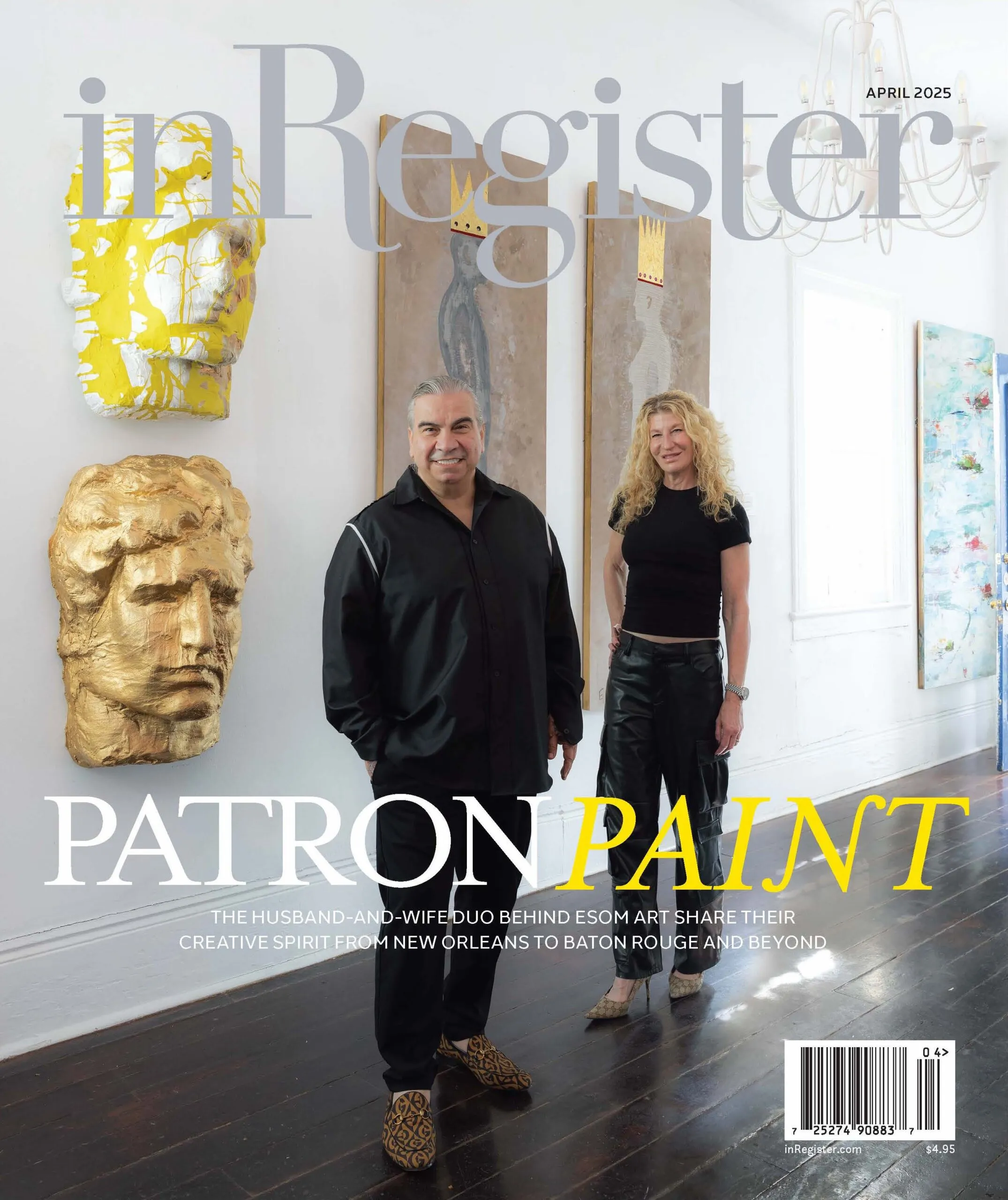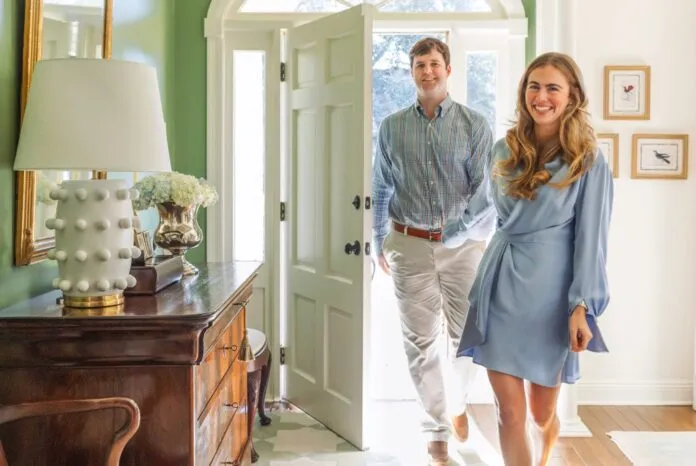Master of the house – Architect Kevin Harris attracts international acclaim
Click here for a slideshow of Kevin Harris’s work.
Kevin Harris can see into the future. And from where he’s sitting, it looks quite a bit like the beautiful past.
When he launched his local architecture firm 30 years ago, he told his father, pediatric allergist Francis Harris, that he was going to be a radical.
“Oh, no,” his dad said. “What are you going to do?”
The answer: “I’m going to build traditional homes.”
Now, Harris is renowned for his ability to bolster historically accurate designs with modern materials that can withstand the harsh demands of the South’s hot, wet and windy climate.
Harris was featured last year in the luxury magazine Robb Report for designing a breathtaking, Tuscan-inspired custom home in Jackson, Miss. He has won more than a dozen national awards for his work and has been featured in The New York Times, Business Week and Southern Living.
The foundation of Harris’ work, whether he’s creating memorable living spaces or building a business, lies in his rapport with clients.
Harris asks a lot of questions when he starts a project: What do you like? How do you live? What do you do for fun?
“You’re supposed to solve problems for your clients, and develop an empathy for those who are using the building,” he says.
Then he applies a huge dose of imagination, stretching his mind into history, legend and Greek geometry.
Flashing as far forward as he can fathom, Harris tries to see what will take place in the mind of every single person who steps into one of his creations, for generations to come.
Walk into his conference room. There’s a large stone table there, and then these walls that stretch so tall you have to crane your neck to see the ceiling.
There is a story behind this space. That’s true for just about every spot that bears Harris’ name. He says every building has a story, after all.
He designed this office building for his father, the allergist.
“When kids go to see an allergist, they are always going to get a shot,” Harris says. This room used to be the waiting room, and he made the walls tall so that a nurse who was coming into the room to call for a scared little one, would appear child-size herself. That helped calm the kids.
“It’s like Alice in Wonderland,” Harris says with a grin. When he moved into the building after his father’s retirement, he decided to use the space as a conference room. Here, the ideas flow and the clock slows.
It’s the perfect place to hash out dreams, with late-afternoon light spilling down those tall walls with shelf upon shelf of inspirational books.
Harris grew up in the Broadmoor subdivision in Baton Rouge. When his parents decided to renovate their home, Dr. Harris’s cousin, Roy Guderian, an architect who had worked with Frank Lloyd Wright, got the job.
“He lived with us and added onto our house,” Harris says. “I was his shadow during that whole process,” though he was young.
At LSU, Harris earned his bachelor’s degree by mastering the design of sleek, modern buildings that could be installed in Tokyo, Berlin or New York. He jokingly refers to them as cereal and shoeboxes.
Then Harris went to Harvard graduate school, where his mentor, Moshe Safdie, encouraged him to delve into history and build his understanding of how Egyptians, Greeks and Europeans made their masterpieces.
Before he opened his firm, Harris taught at LSU. He says he always nudged students: “I’m going to challenge you to hang on and remember what got you here.”
Many of his students were drawn to architecture because of a cathedral or a town square that took their breath away. Remember that feeling, he told them.
It’s the same way he opens conversations with clients.
Jeri and David Kelly moved into their brand-new Stanford Avenue home in September.
“It’s perfect,” says Jeri Kelly.
It all started with an inspiring image: The Kellys love the elegant homes on St. Charles Avenue in New Orleans.
But Harris also wanted the house to fit nicely into the rest of the neighborhood.
And he was a sleuth when it came to figuring out—and banishing—the downside of New Orleans architecture.
His staff went on several reconnaissance missions to St. Charles, where they took pictures of gorgeous details as well as columns and cornices that were rotting.
The result is the Kellys’ home, which has elegant yet durable exterior features and sits a full five feet off the ground—just like the homes on St. Charles—with 12-foot porches deep that flow easily into the kitchen and den. It’s perfect for game day.
“He’s a master of detail,” says Jeri Kelly, who speaks the language of a seasoned architect. “He taught me.”
“Trust” is a word that Harris uses often. When he started on the Tuscan-inspired house in Mississippi, he had a case of the jitters. Here was a homeowner who had a huge budget and was willing to let Harris run with it. The lack of limitation was a little overwhelming.
“The creative process is both terrifying and rewarding,” Harris says.
He focused all his energy initially on building rapport with the client.
“I must have told every contractor and subcontractor that once that trust was established, I was not going to lose it.”
“If I moved it forward 35 feet, the view is shot,” he says. “It’s a retreat. It belongs on this hill. And it’s arranged for the view.”
In the early stages of an idea, Harris likes to hand-draw his vision.
“When you work on a computer, it’s algorithmic,” he says. “When I draw on paper, I can have it in my head, and instantly my brain reconfigures the house in three dimensions.”
He counts A. Hays Town as one of his mentors. In the early years of his firm, he renovated a few of Town’s buildings. It was gratifying to knit his vision on top of the one Town had built.
“What a prince of a man he was,” he says. “We grew up in two different eras, but he was very much against the grain. I would hope I could be compared with him at some point in the future.”
Harris walked the property, which was set on a hill, to perfectly situate the home on its 60 acres. He took aerial photos and used a truck lift to figure out how to design each room to maximize the vista.
Architects sometimes have to play politics to get big projects. Harris says he prefers to zero in on the work and build a solid reputation among clients. He’d like to see local architects work together to expand their knowledge and share what they’ve learned on the job. Together, he believes, architects can give Baton Rouge a distinct look that will carry it into the next century, and beyond.
The very best architects make it their mission to leave behind beautiful buildings, Harris says. Old buildings don’t get preserved if they aren’t nice to look at. “Unless Washington slept there,” he quips.
“I measure my buildings by how long they last and if people love them.”











